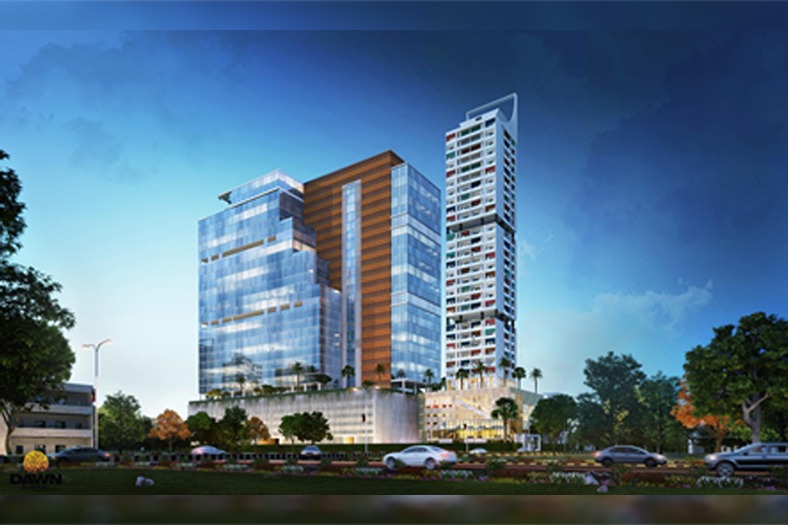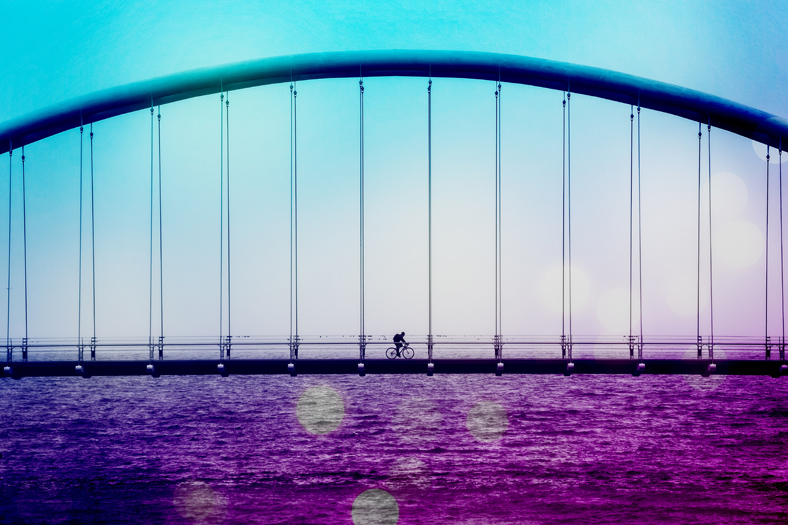Building with glass
Glass facades are slowly taking up on traditional methods of construction. With architects and developers focussing on using glass facades, glass industry is blooming
Gone are the days when glass was limited only to doors and windows. With the advancements in technology and acceptance of glass facades in India use of glass has become a popular practice to beautify structures. Glass facades as an industry is blooming with the improvement in economy and a number of construction projects using glass as facades.
Demand for glass facades in IndiaDue to its fragile nature, the use of glass to bring natural light into buildings was earlier restricted only to windows and other small installations. Due to the development of new construction techniques, value additions and processing being done on glass, this material is now strong and durable and hence considered a viable choice for more complex structural requirements.
While it’s a popular argument in a tropical climate like ours whether we need so much glass on a building structure, the demand is driven by the buyer perception and the need to have more natural lighting entering the building and more outdoor visibility. Speaking about the rising demand for glass Harish Gupta, Vice President-Architecture, Glass Wall Systems India Pvt Ltd says, “We need to understand that glass is a very versatile material and no other exterior finish comes close to its versatility. It’s virtually a maintenance free surface except the regular cleaning it requires making it a preferred choice for architects, developers and the occupants.”
Glass is a smart, adaptable and versatile material, lending itself to endless possibilities both in terms of design and functionality, across exterior and interior applications. “Because of various benefits of glass over other building materials, it is now being used for facades on an unprecedented scale to create remarkable designs and yield eco-savings. Use of glass in façades gives a dramatic effect to the building,” opines Vikram Khanna, COO – Consumer Glass, COO – Architectural Institutional Business, CMO, CIO, Asahi India Glass Ltd (AIS).
The Indian glass industry has been growing at about 5 per cent for the past few years. The value added products are growing faster. R Subramanian, Managing Director, Saint-Gobain Glass India opines, “Glass usage has become part of good design. Trends like the green building movement have encouraged usage of glass in a more evolved manner.” With recent trends of legislation and codification (which encourage the usage of safety glass and energy efficient glass) also indicate that the usage of glass in the high performance segments should grow faster.
Upcoming trendsThe upcoming trends in façade industry are the innovative ways to make use of façade not only as an aesthetic element but also as a functional element in terms of energy generation, dynamic facades that allow various planning functions, LED integrated facades for façade lighting or architectural illumination, green wall integrated facades which gives a touch of green to the architecture, and security facades namely fire proof and blast proof facades.
Mr Gupta states, “Energy generation through facades has been there for a long time and is now taking serious proportions in India.” Integration of BIPV (building integrated photo voltaic panels) that generate energy from the sun rays that falls on it is installed in the glass facades. Since the surface area available on the roof is limited, the building face is becoming a popular choice as the technology for producing energy through solar panels which is improving at a rapid pace.
The buildings of tomorrow will look, feel and perform differently from the buildings of today. As the construction industry gathers momentum, there will be change in designs, choice of the right building materials, and performance of these products, third party testing and certification and the process of construction. “Today there is increasing awareness for the need of multi-comfort in the buildings, energy efficiency, day lighting, thermal insulation, solar control, indoor environment quality etc. These will influence the industry in a long way from now,” says Mr Subramanian.
New glazing technologies and trends are emerging. Few of the major trends are Improved thermal insulation glazing, double-layer façades, façade retrofitting for better energy performance, smart glazing, light shelves, integration of photo-voltaic cells and innovative structural use of glass. Mr Khanna says, “State-of-the-art technologies for lamination and processing have made possible new types and varieties of glasses that enable the perfect blending of function and aesthetics for both exterior and interior applications.”
Products offered in the marketIndia is blessed with variety of glass. With the improvements in technology glass can be designed for each specific purpose. There are number of players in Indian offering different types of glass for building. With companies establishing state of the art facilities in India, glass industry is full of choices for consumers and developers.
Saint-Gobain Glass is having multitude of products. From the basic clear glass, the products ranges from high end energy efficient glass solutions for façade glazing, to crystal clear mirrors, to sophisticated products like lacquered glass, patterned glass for contemporary interiors and products that care about one’s safety with fire resistant glass solutions.
AIS has a wide portfolio of glass products necessary for facades like high performance glasses (Reflective Glasses), reflective glass is also known as solar control glass as it reduces heat gain and glare from the exterior and allows optimum visible light transmission to the interior. It facilitates energy savings through reduction in interior solar heat gain and cost reduction in the cost of heating and cooling systems. AIS offers a wide portfolio of high performance glasses. Tempered/Toughened Glass is a strong glass which is compressive to forces and weak against tensile stresses. Laminated glass offers greater protection for people and property by providing an effective barrier when under attack. Also, laminated glasses have excellent sound insulation properties.
Glasswall specialises in unitised glazing system of every type like large panels of sizes larger than 6 meters in height, curve bent double glass unitised system used in The Capitol Building, reverse inclined unitised glazing used at Pinacle Business Park, Mumbai and many other composite designed panels which fulfil architects design demands. The other major focus is challenging structures like atrium glazing and diagrids like the one done at The Capitol Building at Bandra Kurla complex, Mumbai and also currently being executed at J W Marriot in Kolkata.
Industry challengesSaving energy in structures which have glass mounted façade systems has been a challenge for architects and designers. Glass companies have come a long way in countering those challenges by adopting innovative solutions which do not heat up the interiors of the building and at the same time allow light to pass within the building. Speaking about the challenges Mr Subramanian says, “On the consumer front, there is a strong need for effective implementation of standards on quality, safety, energy conservation in buildings. While on the production front availability and high costs of key raw materials and energy in India, high logistics costs and infrastructure bottlenecks remain areas of concern for the industry.” While glass is considered for its visual appeal and the view it provides on the outside, in most of the buildings the direction of the sun rays, there is lack of enough number of sun shades, no balcony space and poor selection of glass can lead to serious issues within the building.
The traditional building industry suffers serious productivity waste because of poor utilisation of building materials, engineering rework, idling of labour, etc. Mr Gupta feels, “The current market needs volume players who can give them speed in execution, optimisation in cost and quality execution.” ________________________________________
Glass usage has become part of good design. Trends like the green building movement have encouraged usage of glass in a more evolved manner.
R Subramanian, Managing Director, Saint-Gobain Glass India________________________________________
The current market needs volume players who can give them speed in execution, optimisation in cost and quality execution.
Harish Gupta, Vice President-Architecture, Glass Wall Systems India Pvt Ltd____________________________________________
State-of-the-art technologies for lamination and processing have made possible new types and varieties of glasses
Vikram Khanna, COO – Consumer Glass, Asahi India Glass Ltd (AIS).______________________________________________
Cookie Consent
We use cookies to personalize your experience. By continuing to visit this website you agree to our Terms & Conditions, Privacy Policy and Cookie Policy.









